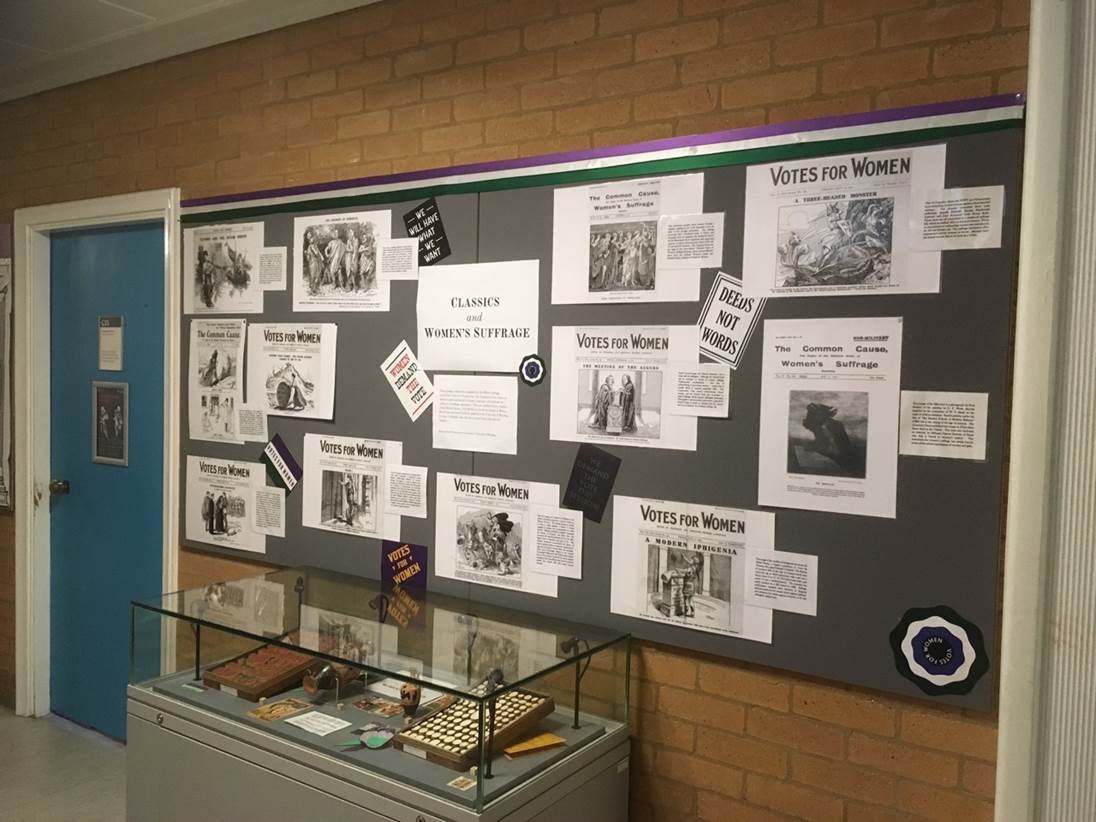Rosie Mack and Una Markham recently undertook a week long research trip to Greece. Here is their account of their travels!
***
We flew to Thessaloniki, collected a car, and made overnight stops in Vergina, Delphi, and Volos.
We began with a visit to the royal Macedonian tombs at Vergina which have been cleverly incorporated into the museum which also houses the artefacts from the tombs. Unfortunately, the ancient palace and theatre here are still not accessible. Nearby, the ancient capital of the Argeads at Pella, is a large and fascinating site (see photo: House of Dionysos). The layout of the Hellenistic public bath house, with drainage system and evidence of underfloor heating, was illuminating. From Macedonia we moved down the mainland to Boiotia, visiting the Museums of Thebes and Chaironeia. The Lion Monument at Chaironeia, the related battlefield, and the fourth century theatre carved into the hillside, were of great interest.

House of Dionysos, Pella
Delphi is one of the most beautiful sites, but best appreciated early in the morning before the hordes arrive! Una was delighted to examine the Treasury of the Boiotians, and after some surreptitious ‘gardening’, was thrilled to discover the Treasury of the Thebans. After Delphi, we drove to Volos by way of the Boiotian town of Orchomenos. Here, the Mycenaean tholos tomb, referred to by Pausanias as the ‘Treasure of Minyas’, was certainly very impressive. The roof of a side chamber is decorated with spirals, rosettes and papyrus flowers which are very well preserved. The fourth century B.C. theatre is undergoing restoration, and it was very useful to be able to question the on-site architect.
From our base in Thessaly, we headed for Larisa. Dr Emma Aston had kindly alerted the Ephor of Larisa at the new Diachronic Museum to our visit. Both the Ephor, Dr Sdrolia, and her assistant Asimina Tsiaka were extremely helpful, giving up their valuable time to answer our questions, and we gratefully thank them. The Museum houses important artefacts, including a large number of coins relating to Rosie’s current research. A special exhibition concerned the ongoing excavations at Kastro Kallithea conducted by the Ephorate at Larisa and the University of Alberta, Canada. The model of this Hellenistic polis, with a selection of finds, was very informative. While in Larisa, we also visited the Hellenistic theatre, which has recently been opened to the public after restoration (see photo).

Larisa, Hellenistic theatre
On our last day we visited Volos Museum, followed by a drive up Mount Pelion, the legendary home of the centaurs. A typical narrow Greek mountain road, Una was slightly perturbed by the lack of a barrier between the road and the sheer drop down to the valley below! However, the view was worth it. After 7 days, covering 1600 km, we flew back to the UK inspired. The trip was invaluable, not only for the evidence we found in the various museums, but also for deepening our perspectives. Actually experiencing the relationship between a site and its surrounding landscape, provided insights that cannot be otherwise conveyed.








